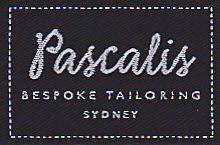Suit Fabric Swatches
Textiles from the world's most respected manufacturers.
We can offer you an enormous range of quality international fabrics sourced from our European suppliers who regularly keep us up to date with new products coming onto the market. These include: Scabal / J & J Minnis / John G. Hardy of London / Dormeuil / Holland and Sherry / Josiah France & Sons.
We tailor in all grades of wool and synthetic blends. This includes silks, cottons and linens, to obtain the finest durability with flannels, worsteds, twills, tweeds and cords in a variety of colours, patterns and textures. Our linings come in a range of fabrics and colours to suit every taste.
Cloth samples
Cashmere
When speaking of cashmere you could truly say that softness is its strength in quite an unusual juxtaposition. Used in Roman and Byzantine periods its popularity has been a continuous historical thread. The true source of the word, linguistically speaking, is Kashmir in northern India where the Asiatic Falconeri goat is a native. The material itself is sourced from the process of the natural shedding of their fine under hair.
Wool
Australia accounts for 25% of global wool production. Despite its categorization as a textile fibre just like cashmere or mohair from goats, or vicuna from alpaca, wool has qualities that set it apart from hair or fur. Spinning capacity is dictated by the fineness of the fibre and therefore wool possessing a fine crimp can be spun into fine yarns. The greater the length of yarn, given the weight of wool, the higher the market value. The wool’s scaling and crimp make the fleece easier to spin thus assisting the fibres to bind in a way that they permanently stay together. Therefore it is 100% natural and comfortable given its superior breathing ability. It’s an excellent material to work with and tailor as it keeps its shape and above all it is easy to dye despite the fact that some breeds of sheep produce black, brown and silver colour fleece, along with all too common creamy-white. Pure Merino wool is naturally fine, silky in texture and extremely soft and typically three to five inches in length with a 12-24 micron count. It is the finest grade of commercial wool available.
Tweed
It constitutes a rough unfinished woollen fabric that is soft and is of a flexible texture. It is made in either plain or twill weave in either check or herringbone pattern. Tweeds are highly suitable for informal outerwear as they are moisture resistant and durable. The original term was tweel that applied to a variety of twilled woollen weaves and cloths utilized in suits, jackets and over-coats. Therefore it is universally understood that tweel is the Scots word for twill. However it is reputed that a London merchant in the 1830s misinterpreted some handwriting as a trade name of a company that specialized in the material assuming it was from where the Scottish border textile industry area is located hence Tweed of Tweed River.
Flannel
It is a soft woven, woollen fabric, most often used in suits and trousers. Flannel was originally made from carded wool or worsted yarn but in contemporary times is more often than not made of wool, cotton or more synthetic fibre. There are both woollen and worsted varieties of flannels.
Worsted Fabrics
Worsted is the name of a yarn and the cloth is made of this particular yarn. The name derives from the village of Worsted in the English county of Norfolk. The village became a centre of production for the cloth after weavers from Flanders arrived in Norfolk in the 12th Century AD. Worsted is a smooth compact woollen, spun from the longer fibres, more than 65mm in staple length, of the fleece. The essential feature of the worsted yarn is the straightness of the fibre as the fibres lie parallel to each other. In times gone by, long fine staple wool was spun in order to create worsted yarn, but other long fibres are also used today.
Gabardine
It constitutes a rough unfinished woollen fabric that is soft and is of a flexible texture. It is made in either plain or twill weave in either check or herringbone pattern. Tweeds are highly suitable for informal outerwear as they are moisture resistant and durable. The original term was tweel that applied to a variety of twilled woollen weaves and cloths utilized in suits, jackets and over-coats. Therefore it is universally understood that tweel is the Scots word for twill. However it is reputed that a London merchant in the 1830s misinterpreted some handwriting as a trade name of a company that specialized in the material assuming it was from where the Scottish border textile industry area is located hence Tweed of Tweed River.


